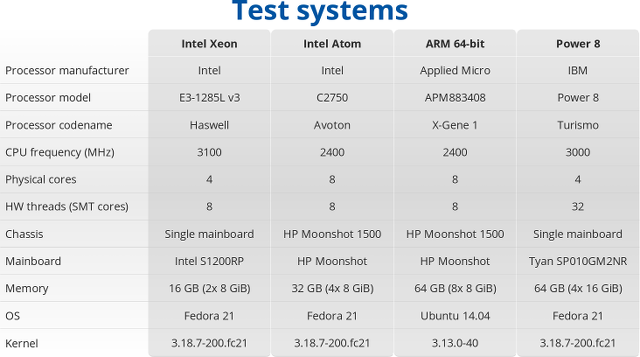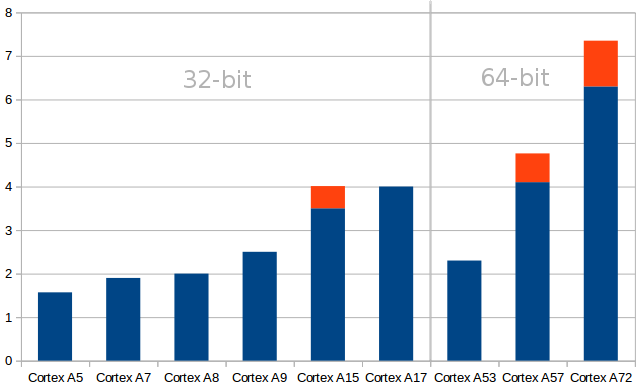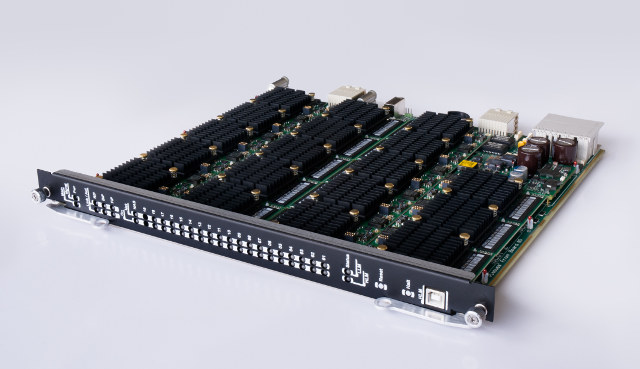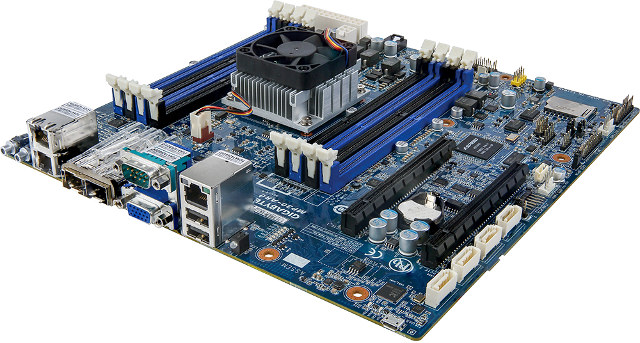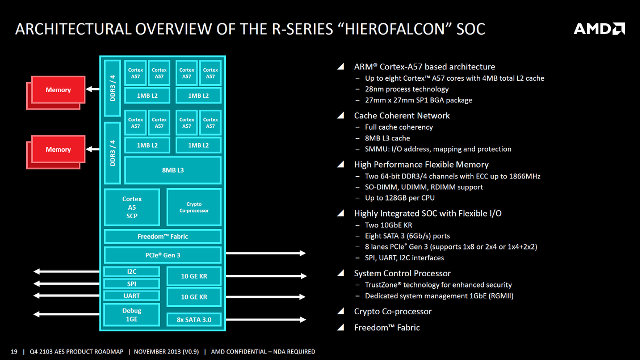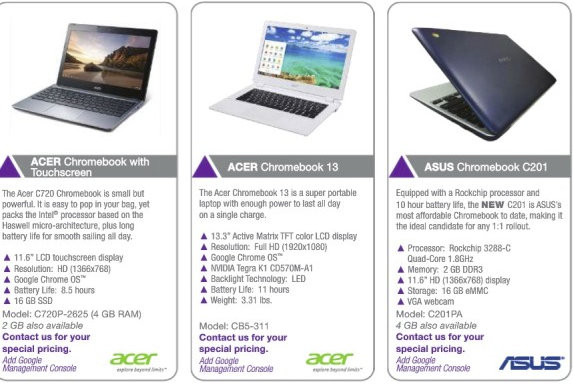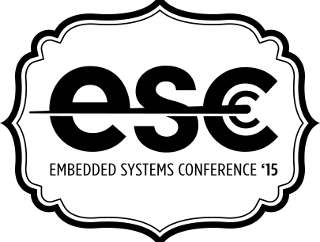Linus Torvalds “Ima Sheep” released Linux Kernel 4.0 on Sunday: So I decided to release 4.0 as per the normal schedule, because there really weren’t any known issues, and while I’ll be traveling during the end of the upcoming week due to a college visit, I’m hoping that won’t affect the merge window very much. We’ll see. Linux 4.0 was a pretty small release both in linux-next and in final size, although obviously “small” is all relative. It’s still over 10k non-merge commits. But we’ve definitely had bigger releases (and judging by linux-next v4.1 is going to be one of the bigger ones). Which is all good. It definitely matches the “v4.0 is supposed to be a_stable_ release”, and very much not about new experimental features etc. I’m personally so much happier with time-based releases than the bad old days when we had feature-based releases. That said, there’s a few […]
HPC Performance & Power Usage Comparison – Intel Xeon E3 vs Intel Atom C2720 vs Applied Micro X-Gene 1 vs IBM Power 8
Last year, the CERN published a paper comparing Applied Micro X-Gene (64-bit ARM) vs Intel Xeon (64-bit x86) Performance and Power Usage, and they’ve now added IBM Power 8 and Intel Atom Avoton C2750 processor to the mix in a new presentation entitled “A look beyond x86: OpenPOWER & AArch64“. So four systems based on Intel Xeon E3-1285L, Intel Atom C2750, Applied Micro X-Gene 1, and IBM Power 8 were compared, all running Fedora 21, except the HP Moonshot 1500 ARM plarform running Ubuntu 14.04 and an older kernel. All four systems use gcc 4.9.2, and Racktivity intelligent PDUs were used for power measurement. I’ll just share some of their results, you can read the presentation, or go through the benchmark results to find out more. HEP-SPEC06 is a new High Energy Physics (HEP) benchmark for measuring CPU performance developed by the HEPiX Benchmarking Working Group, and here it’s not […]
Relative Performance of ARM Cortex-A 32-bit and 64-bit Cores
Many people assume newer processors will be faster, or that 64-bit processor will provide a performance boost compared to 32-bit processors, but the reality can be quite different, and I’ve decided to have a look at ARM Cortex-A cores using ARMv7 (32-bit) and ARMv8 (64-bit) architecture, and see what kind of integer performance you can expect from each at a given frequency. To do so, I’ve simply use DMIPS/Mhz (Dhrystone MIPS/Megahertz) values listed on Wikipedia. Drystone benchmark has no floating-point operating, so it’s a pure integer benchmark. I’m only looking at ARM core here, and once integrated in an SoC, other parameters like memory bandwidth, amount of cache, GPU, etc.. will greatly affect the overall system performance. The figure above are per MHz, and it does not mean for example that a Cortex A5 processor will be slower than a Cortex A7 processor, as can be seen by the comparison […]
Scaleway Provides Dedicated ARM Servers for 10 Euros per Month, 0.02 Euro per Hour
Earlier this year, Online Labs launched a beta hosting program using custom-designed C1 dedicated servers powered by Marvell Armada 370/XP quad core processor. The company has now launched a commercial service called Scaleway providing hosting service on these baremetal servers for 9.99 Euros per month, or 0.02 Euro per hour, as well as a “Infinite Storage” service with 1GB data for 0.02 Euros per month. Here are the details of the 10 Euros plan: Server based on Marvell Armada 370/XP quad core ARMv7 processor Memory – 2GB Memory Storage – 50GB SSD Disk 1x Reserved public IPv4 200Mbit/s – Unmetered bandwith Operating Systems – Ubuntu, Debian, Fedora, ArchLinux ARM. Docker supported. That’s not a VPS, but a dedicated server. For reference, I currently pay around $20 per month (Linode) for a server with an Intel Xeon E5-2680 dual core processor with 2 GB RAM and 50 GB SSD storage, and 3 […]
Gigabyte MP30-AR0 is an ARM Server Motherboard Powered by Applied Micro X-Gene 1 SoC
So far, it’s been pretty hard to buy ARM server motherboards for individuals, as most, if not all, products were reserved to corporate entities, but with Gigabyte MP30-AR0 server motherboard featuring the first generation Applied Micro X-Gene 64-bit ARM processor this might be about to change. [Update: As mentioned in comments I was probably wrong here, since the motherboard is listed on the Gigabyte’s B2B website, and not its B2C website]. MP30-AR0 specifications: Processor – AppliedMicro X-Gene 1 processor with 8 ARMv8 cores up to 2.4GHz (TDP 45W) System Memory – 8 x DIMM slots, Single, dual rank UDIMM modules @ 1333/1600 NHz supported (up to 16GB) Storage – 4x SATA III 6Gb/s ports + 1x SD card slot Connectivity – 2x 10GbE SFP+ LAN ports (integrated), 2x GbE LAN ports (Marvell 88E1512), 1x 10/100/1000 management LAN Graphics – Video Integrated in Aspeed AST2400. 2D Video Graphic Adapter with PCIe […]
AMD “Hierofalcon” Octa-core ARM Cortex A57 Embedded Processors to Ship in H1 2015
AMD started using the ARM license(s) by embedding ARM Cortex A5 cores into some of their x86 processors to add TrustZone security, followed up with Opteron A1100 ARM Cortex A57 processors for servers, and now they’ll soon ship AMD Embedded R-Series SoCs featuring up to 8 Cortex A57 processors. The processors, codenamed “Hierofalcon”, target embedded data center applications, communications infrastructure, and industrial solutions. AMD Embedded R-Series SoC will have the following key features: Up to 8 ARM Cortex A57 cores with 4MB L2 cache (total) Cache Coherent Network with 8MB L3 cache Memory – 2x 64-bit DD3/4 channels with ECC up to 1866MHz; up to 128GB per CPU I/Os: Two 10GbE KR 8x SATA 3 (6Gb/s) ports 8 lanes PCIe Gen 3 (1×8, 2×4 or 1×4+2×2 configurations) SPI, UART, I2C interfaces System Control Processor – ARM Cortex A5 for TrustZone technology and 1Gb Ethernet port for system management Crypto co-processor […]
Asus C201 Chromebook to be Powered by Rockchip RK3288 Processor
If you’ve been following this blog, you should know that Rockchip is working with Google on Chrome OS, so it was just a matter of time before a Rockchip powered Chromebook or Chromebox sees the light of the day. The first Rockchip RK3288 chromebook might end up being Asus C201 Chromebook with apparently a custom version of the Cortex A17 processor dubbed Rk3288-C, as OMG Chrome found out in Troxell’s 2015 brochure for K-12 education. So far we only know a few details about the specifications: SoC – Rockchip RK3288-C quad core Cortex A17 processor @ up to 1.8GHz System Memory – 2 to 4 GB DDR3 Storage – 16GB eMMC Display – 11.6″ display with 1366×768 resolution Webcam – VGA resolution The exact model name should be C201PA. Rockchip RK3288 should provide performance quite similar, and in some cases even better, to Intel Atom Z3735F, except possible when it comes […]
Embedded Systems Conference 2015 Schedule – May 6-7, 2015
The Embedded Systems Conference took the name “Design West” for a couple of years, but this year, there’s no mention of Design West, and the Embedded System Conference 2015 will take place in Boston, MA, US on May 6-7, 2015. The 2-day event will have a demo hall, and well as sessions divided into 8 tracks: Connected Devices and the IoT Embedded Software Design Hardware: Design, I/O and Interfacing Prototyping Embedded Systems Design Software: Design, Languages, & Quality Fantastical Theater Teardowns The full schedule has now been posted, and I’ll build a virtual schedule with some of the sessions provided. Wednesday May 6, 2015 8:00 – 8:45 – Understanding Google/Nest Thread by Michael Anderson, Chief Scientist, The PTR Group, Inc. The IoT will live or die based on its connectivity. In examining existing wireless protocols, Google/Nest found most of them lacking. In order to address the needs for low-power wireless […]



